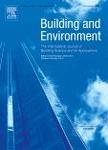版权所有:内蒙古大学图书馆 技术提供:维普资讯• 智图
内蒙古自治区呼和浩特市赛罕区大学西街235号 邮编: 010021

作者机构:Chuo Univ Grad Sch Sci & Engn Urban Ecol Lab Tokyo Japan
出 版 物:《BUILDING AND ENVIRONMENT》 (Build. Environ.)
年 卷 期:2025年第270卷
核心收录:
学科分类:0830[工学-环境科学与工程(可授工学、理学、农学学位)] 08[工学] 0813[工学-建筑学] 0814[工学-土木工程]
基 金:Institute of Science and Engi-neering of Chuo University
主 题:Biophilic design Energy-saving Thermal perception Virtual reality Green building certification Indoor environmental quality
摘 要:Balancing the Indoor Environmental Quality (IEQ) and energy saving for heating, ventilation, and airconditioning (HVAC) is important for the building industry. Previous studies report that one of the energyefficient ways of improving levels of thermal comfort is biophilic design, which is the indoor design strategy using natural elements (i.e., plants). Among the industrial standards expanding biophilic design practices is green building certifications (i.e., the WELL certification) emphasizing IEQ for enhancing occupants health, wellbeing, and productivity, while few studies conducted controlled experiments testing the psychological thermal effects of biophilic indoor environments in certified green offices. This study used a virtual reality (VR) image of a WELL-certified office emphasizing indoor planting design, while measuring participants (N = 47) subjective thermal perceptions, heart rate (HR), heart rate variability (HRV), salivary alpha-amylase (sAA) activity in the neutral (SET* 24 degrees C) and high (SET* 30 degrees C) temperature conditions. The subjective thermal evaluation in the high-temperature condition indicated that participants group viewing a biophilic VR image felt significantly cooler and more comfortable than the control group. By using the hot-cold sensation evaluation values, we estimated that the psychological cooling effect of the biophilic VR image was equivalent to 1.66 degrees C, saving HVAC cooling energy up to 12.6 % among thermal climate zones ranging from Cold Humid to Very Hot Humid. However, the biophilic visual stimuli did not affect autonomic nervous activity (HR, HRV, sAA) in the hightemperature condition. This study demonstrated the potential benefits of practical biophilic design improving occupants thermal comfort levels and saving building energy.